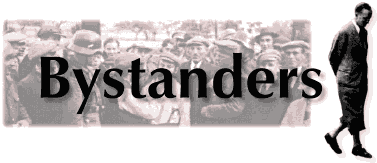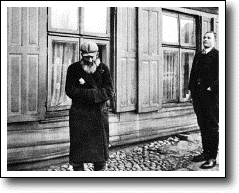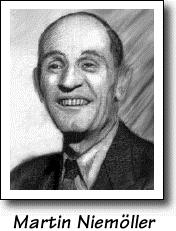
Bystanders were ordinary people who played it safe. As private citizens, they complied with the laws and tried to avoid the terrorizing activities of the Nazi regime. They wanted to get on with their daily lives. During the war, the collective world's response toward the murder of millions of people was minimal.

Bystanders may have remained unaware, or perhaps were aware of victimization going on around them, but, being fearful of the consequences, chose not to take risk to help Nazi victims. Cynthia Ozick writes,
Indifference is not so much a gesture of looking away--of choosing to be passive--as it is an active disinclination to feel. Indifference shuts down the humane, and does it deliberately, with all the strength deliberateness demands. Indifference is as determined--and as forcefully muscular--as any blow.
Claude Lanzmann's documentary, Shoah, provides another
portrait of the bystander. At first, bystanders who were interviewed in
this documentary engaged in self-deception about the murder of Jews. Only
after lengthy questioning did they finally acknowledge that they chose
their roles deliberately, even when they could have done otherwise.
 First they came for the communists, and I did not speak out
First they came for the communists, and I did not speak out
because I was not a communist.
Then they came for the socialists, and I did not speak out
because I was not a socialist.
Then they came for the labor leaders, and I did not speak out
because I was not a labor leader.
Then they came for the Jews, and I did not speak out
because I was not a Jew.
Then they came for me, and there was no one
left to speak out for me.
--The Reverend Martin Niemöller, a pastor in the German Confessing
Church who spent seven years in a concentration camp.
"The Struma: The Boat That Never Made It" from the Mining Company.
Gerda Blachmann Wilchfort recalls her voyage on the SS St. Louis to Cuba, past Miami, and back to Belgium.
Interactive quiz on Bystanders.
Lesson plans, discussion questions, term paper topics, reproducible handouts, and other resources for teaching about bystanders are available here.
| Victims | Perpetrators | Bystanders | Resisters | Rescuers | Liberators | Survivors | Children |
A Teacher's Guide to the Holocaust
Produced by the Florida Center for Instructional Technology,
College of Education, University of South Florida © 1997-2013.